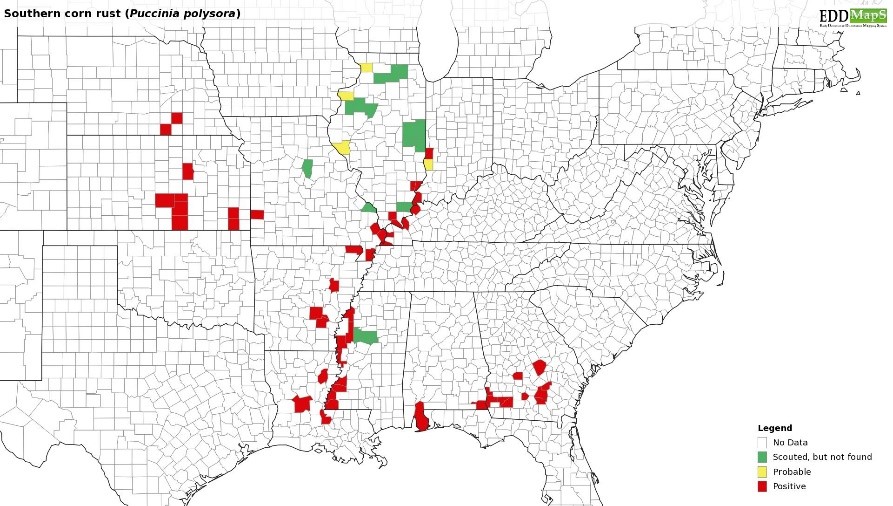
Southern Rust: Southern rust was officially confirmed in Posey County this week. We currently have two positive counties and one probable in Indiana.

Southern Rust: Southern rust was officially confirmed in Posey County this week. We currently have two positive counties and one probable in Indiana.
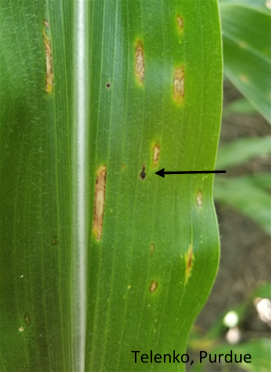
Gray leaf spot is also active in the lower canopy at multiple sites across the state. The lesions are light tan in color and generally narrow and rectangular, and can be as long as 2 inches.

It is time to get out and scout for corn diseases. Even though recent weather conditions have been hot and dry, there are a number of corn diseases emerging in the lower canopy.
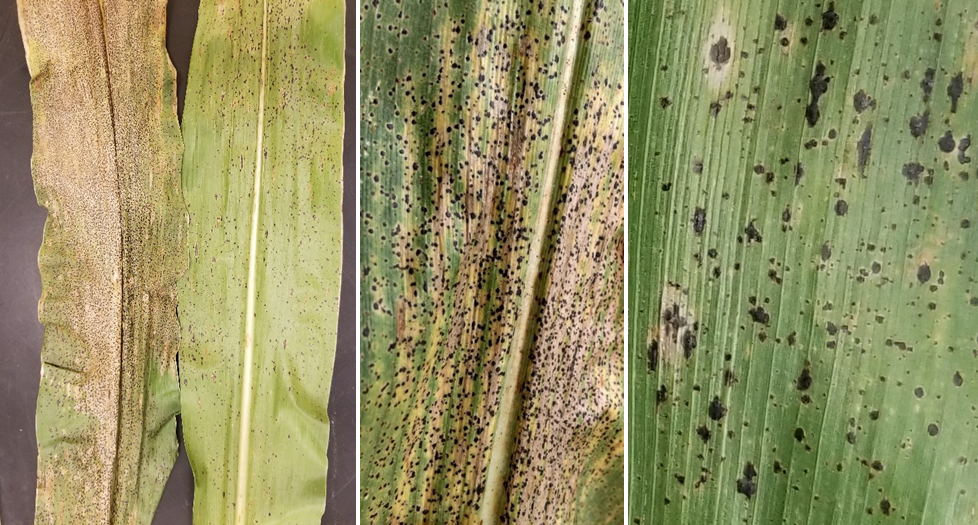
Tar spot of corn is a new concern this season after the localized epidemics we experienced last year in Indiana.
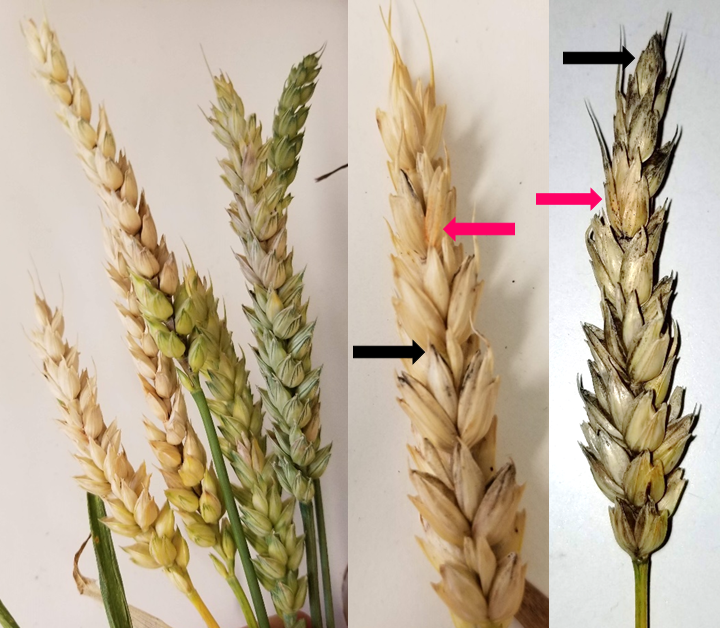
Wheat harvest has begun in Southern Indiana. Fusarium head blight (FHB) or scab is one of the most important diseases of wheat and most challenging to prevent. In addition, FHB infection can cause the production of a mycotoxin called deoxynivalenol (DON or vomitoxin). The environmental conditions have been extremely conducive to FHB development and it is not surprising that I have started to receive reports about issues with FHB and DON contamination. Our research sites in both West Lafayette and Vincennes have high levels of FHB develop in our non-treated susceptible variety checks and initial DON testing was at 7 ppm. Fusarium head blight management is difficult and requires an integrated approach. This includes selection of varieties with moderate resistance and timely fungicide application at flowering. We are now past implementing either of these management options, but these are important to remember for next year. In addition, it will be[Read More…]

We have received a number of calls about leaf spots occurring in alfalfa. Many of the common foliar diseases of alfalfa are favored by the high moisture conditions this season in Indiana.
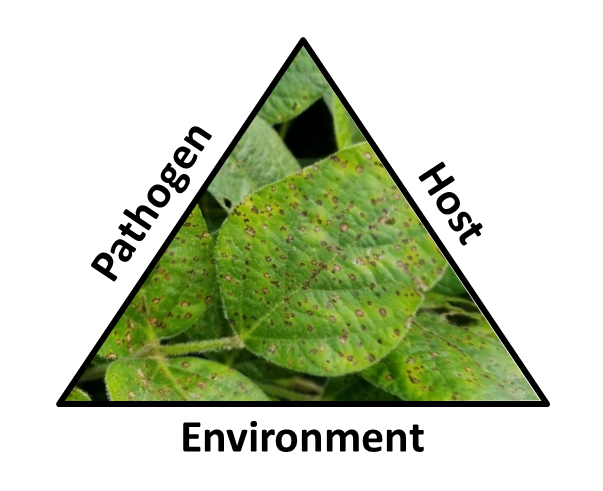
Recently there has been a number of calls and samples submitted to the Purdue Plant Pest Diagnostic Lab (PPDL) worried that they have frogeye on soybean. I know due to the issues we saw at the end of last season there is a bit of concern about managing frogeye.

We keep getting this question, because as we write this, it is storming yet again in many locations in the Midwest. Rain, rain, and more rain has pushed back timely planting everywhere.
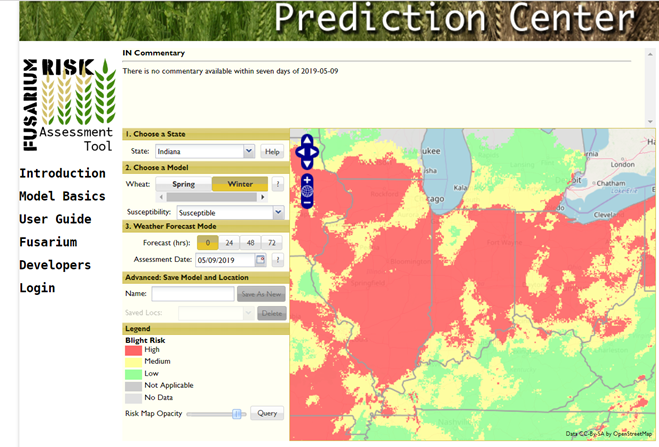
I have heard that wheat is starting to flower in parts of southern Indiana, and the Fusarium risk forecast is still red for most of the state indicating a high-risk potential for infection. Recent weather conditions will only continue to promote the high risk.
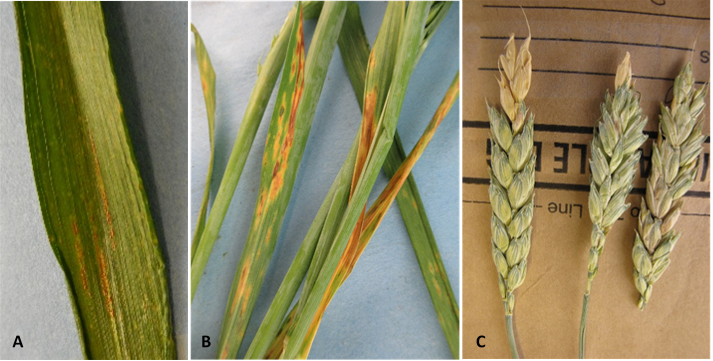
Even though rainy conditions continue to slow planting across the state, we need to keep an eye on winter wheat. These wet conditions will favor many fungal diseases.
© 2024 Purdue University | An equal access/equal opportunity university | Copyright Complaints | Maintained by Pest&Crop newsletter
If you have trouble accessing this page because of a disability, please contact Pest&Crop newsletter at luck@purdue.edu.